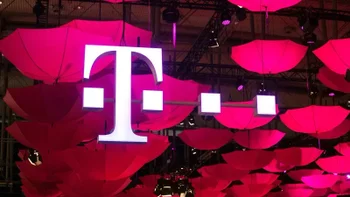The 13-inch iPad Pro M4 (2024) is getting easier to repair, but the Pencil Pro is "disposable"

The new 13-inch iPad Pro M4 (2024) has arrived at iFixit's headquarters and this means one thing and one thing only: it's dismantled.
The repairability team calls the slate "an impressive bit of technology", but the Pencil Pro is called "a disposable piece of …", so there you have it.
As tablet (and Apple) aficionados know, the 13-inch iPad Pro M4 (2024) boasts a Tandem OLED, also known as the Ultra Retina panel. This display is accessible only through the screen, much like its LCD predecessors. Although the adhesive securing the screen isn’t overly aggressive, the repair process remains daunting and not for the faint of heart. The Ultra Retina panel is likely to be costly to replace, posing a risk of damage during repairs.
The new panel is a remarkable feat of engineering. Manufactured by Samsung and LG, the Tandem OLED panel offers a peak SDR brightness of 1000 nits, a substantial increase from the 600 nits on the 6th generation iPad Pro. The contrast ratio is also doubled, resulting in brighter whites and darker blacks.
Apple’s explanation of the technology simplifies its complexity. Instead of stacking two OLED panels, the traditional OLED stack has been modified to include more electroluminescence layers within each diode. This enhancement boosts the light and color transmission, mimicking the effect of stacked OLEDs but maintaining a single OLED on the board. Additionally, Tandem OLEDs have a longer lifespan, making their inclusion a smart choice.
A significant win for repairability in the iPad Pro 13 is the improved battery replacement process. For the first time, the battery can be accessed immediately after removing the screen. While there are still some screws and brackets to navigate, this is a vast improvement over previous models:
Despite being the thinnest device Apple has ever produced, the new iPad Pro prioritizes battery replacement, which is nothing short of great news.
Despite the victory with battery replacement, the iPad Pro 13’s ultra-thin design brings significant repairability challenges. Several components, including the daughterboard*, speakers, and coax cables, are glued down due to space constraints. This means that attempting to remove these parts risks damaging them, as they are not secured with screws. The delicate nature of these components adds a layer of difficulty to repairs.
*The motherboard is the main circuit board in a device that houses the primary components, such as the processor and memory. A daughterboard is a smaller circuit board that connects to the motherboard to provide additional functions or features. Essentially, the daughterboard extends the capabilities of the motherboard without taking up too much space.
The Pencil Pro, though an advanced tool, poses significant repair challenges. Its battery is not easily replaceable, making the Pencil Pro a disposable item once the battery dies. This is disappointing given its capabilities.
The repairability team calls the slate "an impressive bit of technology", but the Pencil Pro is called "a disposable piece of …", so there you have it.
On the display
As tablet (and Apple) aficionados know, the 13-inch iPad Pro M4 (2024) boasts a Tandem OLED, also known as the Ultra Retina panel. This display is accessible only through the screen, much like its LCD predecessors. Although the adhesive securing the screen isn’t overly aggressive, the repair process remains daunting and not for the faint of heart. The Ultra Retina panel is likely to be costly to replace, posing a risk of damage during repairs.
On the battery
A significant win for repairability in the iPad Pro 13 is the improved battery replacement process. For the first time, the battery can be accessed immediately after removing the screen. While there are still some screws and brackets to navigate, this is a vast improvement over previous models:
There’s still some screws and brackets but this is a major improvement over previous generation iPad’s where a 2-3 hour ordeal saw the logic board and the kitchen sink removed before the battery could be accessed.
--Shahram Mokhtari, iFixit, May 18, 2024
Despite the victory with battery replacement, the iPad Pro 13’s ultra-thin design brings significant repairability challenges. Several components, including the daughterboard*, speakers, and coax cables, are glued down due to space constraints. This means that attempting to remove these parts risks damaging them, as they are not secured with screws. The delicate nature of these components adds a layer of difficulty to repairs.
*The motherboard is the main circuit board in a device that houses the primary components, such as the processor and memory. A daughterboard is a smaller circuit board that connects to the motherboard to provide additional functions or features. Essentially, the daughterboard extends the capabilities of the motherboard without taking up too much space.
The Pencil Pro situation (and overall impressions)
The Pencil Pro, though an advanced tool, poses significant repair challenges. Its battery is not easily replaceable, making the Pencil Pro a disposable item once the battery dies. This is disappointing given its capabilities.
However, this doesn't stop iFixit's author from concluding the following:
Everyone is already celebrating the technological wonders of this device, it is without a doubt a thing of beauty, but we’re also happy to see Apple prioritize repairability. It’s great to see the battery being designed for accessibility and replacement and yet that victory is soured a bit by the compromises required to create a needlessly thinner device.
Follow us on Google News









![A new Android bug is making it impossible to install new apps. Are you affected? [UPDATE]](https://m-cdn.phonearena.com/images/article/176703-wide-two_350/A-new-Android-bug-is-making-it-impossible-to-install-new-apps.-Are-you-affected-UPDATE.webp)

Things that are NOT allowed:
To help keep our community safe and free from spam, we apply temporary limits to newly created accounts: